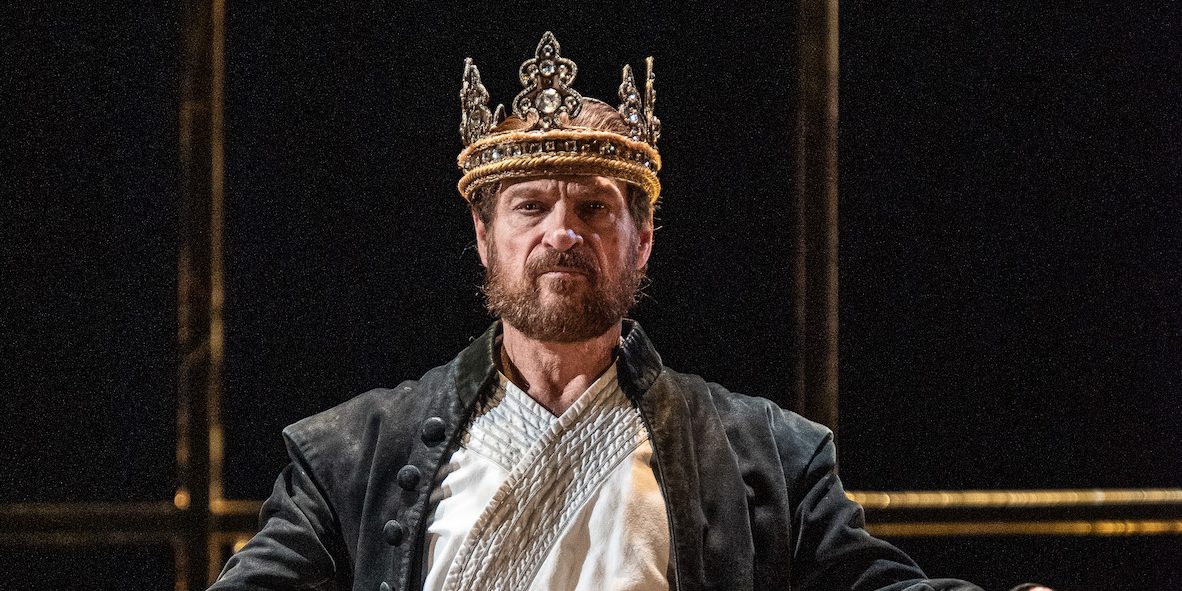‘Macbeth’ is the first of Verdi’s three settings of Shakespeare’s plays, each of them contrasted and remarkable in their own way. But unlike the last two, both supreme products of the composer’s inspired old age, this is an early and oddly shaped work. For the first two acts the initiative and indeed the bulk of the music is invested in Lady Macbeth rather than her husband, and it is only in the later stages that he comes to the fore. There are several finely crafted set pieces, as you would expect from this composer, but the one that really tugs the heart comes near the end when a subdued chorus laments the oppression of their homeland and taps into the nationalist sentiments that were closest to Verdi’s own heart in the 1840s.
This production by Phyllida Lloyd was first seen in 2002, with many revivals since then. It has as many oddities and contrasts as the opera. There are some fine tableaus and neatly repeated visual motifs woven in and out of the four acts. But there are also distracting extraneous details too that get in the way of the music – the witches, who along with Macbeth and his wife dominate the music, are multiplied in number but also lack all sinister aspect and intent, their cauldron more a cookery class than a portent of imminent doom. And why was there an onstage tap that ran throughout Macbeth’s first aria and then in the next scene offered not a drop of water to wash bloodied hands?
Musical values were, however, excellently observed. In the pit Daniele Rustioni set a cracking pace while making room for baleful wind solos and making space for the bold brassy climaxes needed for the scenes of murder and pageantry. In the title role the veteran baritone Simon Keenlyside did his best with an often ungrateful role. He delivered a convincing portrait of the corruption that ambition lends to power and acted a very plausible grizzled general. Verdi offers steeper vocal challenges to Lady Macbeth, and these were taken with panache by Anna Pirozzi, a singer with long-standing experience of this part. Her role gains greater psychological depth from several insertions and revisions made by the composer for a Paris revival in 1865. And therefore she succeeded in projecting a layered persona quite close to Shakespeare’s flawed character, so that we see through the music the costs of her steeling herself to the sequence of murders needed to seal their hold on the throne.
There is strength in depth in the other casting. As Banquo and Macduff, Günther Groissböck and David Junghoon Kim only have an aria each, but they both acquit themselves stylishly and make you wish for more. And even minor roles, such as Macbeth’s successor Malcolm, are sung with tone and feeling. As usual the Covent Garden chorus find expressive intensity and a wide range of dynamics, whether as witches or as courtiers abashed by Macbeth’s visions, or as (leafless!) Birnam Wood marching to final victory. There is an attention to musical detail and ensemble here that impresses.
The staging sets a slalom course of rapid scene changes to be negotiated, and Anthony Ward’s set design flexibly accommodated them by taking an oppressive, claustrophobic panelled room as the basic domestic interior, ripe for conspiracy and plotting, and then opening it out at intervals to admit a golden cage of a throne room or beds, whether joined or separate. Lighting tended towards the gloomy so as to heighten impact of the flashing and glowing metallic colours of, crowns armour and weaponry, and costumes crossed various periods with touches of Slavonic exoticism spread around. The fighting in the battle scenes convinced, and the choreography was apt and full of interesting detail.
This is an absorbing and thoughtful production of an opera that the composer knew to be less than perfect. But on its own terms it works effectively while giving many hints of how much deeper Verdi could fuse his own musical genius with Shakespeare’s after the passage of another thirty years.

